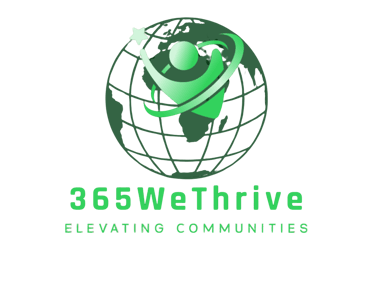submit interest for our programs and Events spaces are limited...
REGISTER FOR an experience that will last a lifetime! 365 Together we thrive!!
Beyond the Zip Code: Shining a Light on Health Inequities
This article introduces the social determinants of health (SDoH) and their impact on inequities and disparities. It provides a path of hope and strategy for the community and nonprofits that support the mission to promote equity and foster opportunity in every zip code.
Cassandra Olivier
9/2/20253 min read


Understanding Social Determinants of Health
When we talk about health, it’s easy to think about diet, exercise, and medicine. However, the reality is much deeper and multifaceted. The term social determinants of health (SDoH) encompasses a wide range of factors that affect an individual’s overall well-being, often more than genetics or personal behaviors. From where you live, the kind of job you hold, the quality of education you receive, to the availability of healthcare—all of these elements can significantly impact your life expectancy and health status.
The Stark Reality: A Tale of Two Communities
Take Chicago, for instance, where a child's zip code can reveal a complex narrative of health disparities. A child born in a northern suburb, surrounded by resources, parks, and healthcare facilities, might enjoy an average life expectancy of 85 years. Meanwhile, a child just a few miles away in an underserved neighborhood may only expect to live until age 69. These 16 years represent not just a number; they reflect systemic inequities that impact daily life, access to nutritious food, safe housing, economic stability, and comprehensive healthcare. They are the result of deep-seated historical and economic inequities that limit access to quality education, healthy food, safe environments, and opportunities for economic mobility. These are not just health issues; they are fundamentally community issues that demand a holistic solution.
Closing the Gap: Community Strategies and Non-Profits Solutions
When the systems that are meant to support communities fail, non-profit organizations often step in to fill the gaps. They serve as crucial lifelines, providing resources, education, and opportunities that are otherwise inaccessible. They become the engines of change, working to create a future where every child, regardless of their background, has the chance to thrive.
This is the vital role of organizations like 365 We Thrive. This organization was founded with a powerful mission to empower the next generation, recognizing that to create lasting change, we must address the root cause of inequities and invest in the future leaders of our communities.
While 365 We Thrive has also supported adults and small businesses, its primary focus is on youth aged 9 to 24. This focus acknowledges that by equipping young people with the right tools, knowledge, and mindset, we can build a foundation for a more equitable future. The organization's programming, a cornerstone of its work, engages students in application-based learning that goes beyond textbooks and encourages real life skills, youth-led community initiatives and activating their knowledge into practice.
This program is a direct response to the community-wide challenges created by SDoH. By offering safe, engaging, and purposeful activities, 365 We Thrive provides an alternative to negative influences and creates a sense of belonging. The organization is actively working to foster a community where youth are not just passive recipients of aid, but are active participants in their community’s transformation. Influencing transformation and addressing these disparities requires a community-driven approach. Local governments, health organizations, community leaders and nonprofits should work to collaborate and engage with the populations they serve. Initiatives like improving public transportation to ensure better access to clinics, providing education on nutrition and health literacy, collective support of the components of the SDoH, and investing in youth programs like 365 We Thrive can help bridge this gap.
Moreover, engaging residents in community planning can empower them to participate in shaping the solutions that work for their unique circumstances. By fostering environments that promote wellness, the idea of health becoming a 'product of place' can be transformed into one of equity and opportunity for all, regardless of zip code.
Ultimately, recognizing how where we live can shape our health is just the beginning. We must advocate for change, bring awareness to the issues at hand, rally for the support of programs that serve to minimize disparities, and strive for a society where every zip code can become a gateway to a long and healthy life. It’s about time we look beyond the zip code and tackle the root causes of health inequities head-on!
365 Together We Thrive!
Elevate Youth
365 Together We Thrive !
Come along on the journey as we inspire youth leaders and shape communities that thrive.
365 We THrive NFP
THrive news
info@365wethriveinc.org
773-234-4456
© 2025. All rights reserved.
5113 S. Harper Ave
Chicago, IL 60615
365 We Thrive NFP is a 501(c)(3) charitable organization. Donations are tax-deductible to the extent allowed by law.
